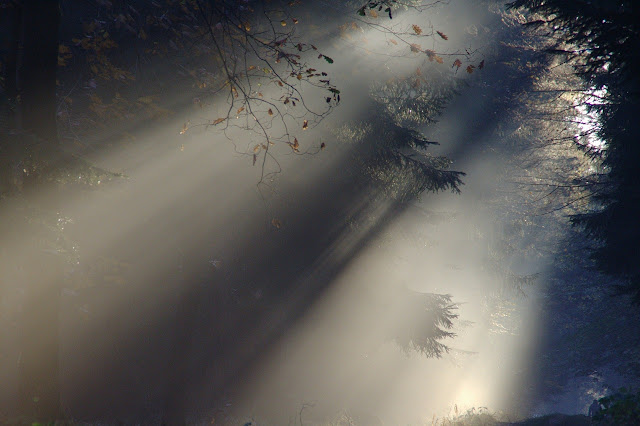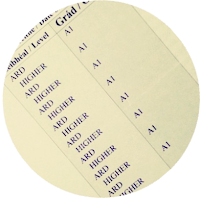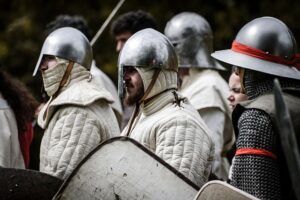“The general vision and viewpoint of a text can be determined by the success or failure of a central character in his/her efforts to achieve fulfilment.”
In the light of the above statement, compare the general vision and viewpoint in at least two texts you have studied in your comparative course.
This is a #625Lab review of a current Leaving Cert English student’s essay highlighting all the ways they’ve gone wrong to help our readers avoid these common pitfalls.
For H1 standard essays on General Vision and Viewpoint, have a look at these:
Comparative – General Vision and Viewpoint – Sample Essay: Citizen Kane, The Dead and Wuthering Heights
Comparative – General Vision and Viewpoint – Sample Essay: Foster, Juno and All My Sons
I received this wonderful essay from someone (let’s call her Mary) who is clearly great at English, but may not be getting a H1 because instead of writing a Leaving Cert essay, she attempted something more suited for a psychology Ph.D. thesis. Mary outlined their problem like this:
“I am really struggling to condense my comparative essays down in length, my teacher has ridiculously asked us to write between 9 and 11 pages for each answer and I know how unfeasible this will be during an exam. I answered the way he asked us to for general vision and viewpoint with an opening, a conclusion and two other key moments in between. I have read your sample answers and although they are a great help, I am unsure what to remove from my essay as I only received good marks due to the detail I put into the essay.”
Indeed, Mary sent in a 2800 word monster of an essay, where I can’t imagine anyone writing more than 1500 words in the allotted time. So how do we condense this? You will see the following main issues below:
– too much detail or analysis
– saying something elaborately over, say, 9 lines when it can be said in 2
– detail that doesn’t include a comparison and is therefore nearly irrelevant
– overt repetition
The three texts I have studied as part of my comparative course are “The King’s Speech” directed by Tom Hooper, “Foster” by Claire Keegan, and “The Plough and the Stars” by Seán O’Casey. Examining a text and its central character can most certainly reveal the general vision and viewpoint to readers. In this essay, I will compare and contrast Bertie, The Girl, and Nora, the three central characters of my texts.
The opening scene of a text reveals to us the immensity of the challenge the central characters will face in their effort to achieve their goal. Across all three of my texts, the opening scenes give us a good insight into how the central character will fare. In the opening of “The King’s Speech” Bertie is inundated and overwhelmed with the task of speaking publicly at Wembley stadium. The vast stadium and panning shots of the gauges show us the magnitude of his task, and close ups and camera angles combined with the musical score all depict the sense of entrapment he feels. This leaves us with a pessimistic outlook from the beginning of the film, however, this pessimism is one with hints of optimism in it. These hints of optimism all lie in Elizabeth, Bertie’s wife. Unlike Nora and Jack’s marriage in “The Plough and the Stars”, this marriage is honest and supportive. Through all of Bertie’s struggles, Elizabeth is his beacon of light and his catalyst for change. It is Elizabeth who gives both Bertie and us hope for his future.
You may also like Complete Guide: A1 Leaving Cert English Notes and Sample Answers
The constant change in settings in this opening gives us hope too because, like in “Foster”, Bertie must step outside his comfort zone to get better. Much like in “The King’s Speech”, in “Foster” we see the central character, the girl outside her normal setting, “turn into what [she] could be”. It is clear the girl has not had an easy past. There is tension between her overworked mother and her father who is uncouth, cold and regularly gambles “where my father lost our red shawthorn in a game of forty-five.” It is also clear the girl comes from poverty and deprivation “my thin cotton dress, my cotton dress.” However the character of the girl herself gives us hope in how incredibly self-aware and self-contained she is. There is no sense of fear or worry in the girl; she is hopeful and excited for her stay in this house, she knows she has room to grow and develop here. “Here there is room to grow and time to think.” (The above reads too much like a Single Text essay with thorough quotes. Just make the point that the girl is well-adjusted and move on. The focus here is to make comparisons – not to illustrate analytical reflections).
Much like in “The King’s Speech” any pessimism in “Foster” is offset by Edna. In this opening scene she is a beacon of light and love for the girl. In both “The King’s Speech” and Foster, lighting is an important technique used to put across the general vision and viewpoint. In “The King’s Speech” the whole opening sequence is drained of colour, but in contrast to this, in “Foster”, it is mainly light with only brief shadows, which is reflective of the general viewpoint.
In stark contrast to both of these opening scenes, the opening to “The Plough and the Stars” is deeply pessimistic without even a glimmer of hope to be seen. The setting and background of this play is a city torn apart and decimated by civil war, and the fact that throughout this entire scene they are all stuck in a tenement building “struggling for its life against the assaults of time, and the more savage assaults of tenants” highlights the negative viewpoint. Much like Bertie in “The King’s Speech”, Nora, the central character in “The Plough and the Stars” is entrapped and suffocated by her surroundings. Her situation Is a living death, everyone is living half lives and most of them end up dead. The idea of death is pervasive in the entirety of this play, not only in the opening. Unlike with either of the central characters in “The King’s Speech” or “Foster”, it is evident that there is no hope for Nora. Both her coping mechanisms and her self-deception are so deeply instilled into her that we know and can predict her fate. Also in contrast to “The King’s Speech”, Nora and Jack’s marriage is a shambles. Instead of supporting her husband like Elizabeth does Bertie, Nora undermines and deceives her husband. She has no respect for what he is doing in the citizen army. She is so incredibly self-centered that she cannot see past herself to a greater good. (There is an implicit comparison here with the more selfless Elizabeth. It is better to either make a direct comparison or move on to another point where you can make one more easily. Also, given that the focus of the essay is central characters, it would be better to try and compare Nora vs Bertie rather than Nora vs Elizabeth. )
From reading these three texts I got an insight into the fact of the central characters and gave way to how they would fare in their journey to success. (Generally speaking, this is a nice touch. However, there’s no need for this as the essay structure is quite clear – and we’re trying to save space.)
In key moment two (What is key moment two? By whose count? Try to speak in a language that could be understood universally) of both “The King’s Speech” and “Foster”, we see the central character making leaps in their journey to success. However, in glaring contrast, we see Nora begin her descent. Key moment two in “The King’s Speech” is really positive and optimistic throughout. Although in this scene we see Bertie venting about difficult topics to Logue, it is in a positive sense.
Bertie is able to get all his issues off his chest and it highlights the therapeutic relationship between them. Not only that that but he completely and utterly trusts Logue, this is a progression in their relationship from “business” to “friends”. Bertie sees Lionel as his equal in this scene, sitting beside instead of across from him. Bertie also calls Lionel by his first name in this sequence which is important for their relationship. (All of this is true, but too detailed. It is enough to say that the scene is positive without giving all this detail.)
Bertie no longer feels like a burden on Logue, which is exactly like the girl in “Foster”. In this chapter of “Foster”, we see huge positive developments in the relationship between the Kinsellas and the girl. At the beginning of this chapter, the girl wakes to find she has wet the bed. She also calls this “the old feeling”: she is used to this. But the incredible kindness of Edna particularly helps her through this. Much like Logue in “The King’s Speech”, Edna is a guiding presence in the girl’s life. Giving her jobs to give her a sense of purpose. She no longer feels like a burden, and this almost directly mirrors Bertie. In both of these people, we see immense character development which is hugely optimistic.
You may also like Comparative | General Vision and Viewpoint | Citizen Kane, The Dead and Wuthering Heights
With Nora however, while we do see development, it is an altogether negative one. This scene is almost painful to watch as we see her begin her spiral downwards into madness and derangement. We see Nora wandering the streets, heavily pregnant looking for Jack. She is most certainly not in a good physical state “worn out from travelin’ an’ want o’ sleep.” And this definitely reflects her mental state. This unbalanced mental state is really shown through her complete disregard for the chaotic and war-torn scenario surrounding her. (Too much like a quasi-psychiatrist! Leave these musings for when you are discussing your single texts’ “mad” people for there are enough of them there too.)
She is so completely and utterly self-centred that she cannot step outside herself and see the bigger picture. Repetition. Surely, this won’t help to make the essay shorter. She saw men shot, wounded and dead, but all that she could think of was herself, and her marriage. This is a serious character flaw for Nora because we know if she cannot move outside her comfort zone. She won’t be able to recover or grow. (It would have been nice to give a very short account of this the first time that Nora was called self-centred in this essay, but again, it isn’t necessary as there is no direct comparison to make here.)
We see Bertie and that girl both in new and sometimes uncomfortable situations, but this is really what allows the to grow and develop, so from seeing Bertie and the girl’s development we know Nora’s fate is not optimistic. (This is restating the obvious. No need.) From the key moments, I gained a deeper insight into not only the general vision and viewpoint but the development of central characters. (See above: this isn’t 100% required.)
In key moment three, [Three? Who’s counting?] we see each of our central characters face a major setback to their journey, and this has a major impact on the general vision and viewpoint of each text. For Nora in “The Plough and the Stars”, we see her reunited with Jack, however, the reunion is completely over the top and one-sided. Once again we see in this scene her physical appearance, “her face is haggard… eyes agleam” reflects her tumultuous mental state. (We already know this, so no need to repeat.) This scene highlights the fact that war supersedes everything, no relationship could ever possibly flourish in this negative and oppressive time. (Why is this sentence here? It may be true, but are we making a comparison? No. Therefore, store it for your theme or issue essay.) This entire scene and reunion are overwhelmingly negative, while Bertie and the girl are both on a steady incline, Nora is rapidly spiralling down into complete madness. (Repetition is the mother of long essays… ) Her superficially is again precedent, and this in in direct contrast with the girl who is incredibly self-contained and self-aware. (Repetition.) Nora’s self-deception is so incredibly ingrained that she has forgotten all the difficulties in her marriage and has driven herself mad from her “love” of Jack. (Repetition.). We also know from this scene that Nora has no chance of recovery as she is relying on something outside herself for happiness (Jack) rather than trying to find it within herself. (Whoever wrote this will be the next Freud or Kahneman, but they aren’t making comparisons – which is what we need here!) Much like in “The Plough and the Stars”, in “The King’s Speech” we see Bertie the central character face a major setback in his progress. Although sequence eight [Sequence eight?! Is this from the synchronised swimming event last summer?] is very pessimistic there are glimmers of emotional release to Logue. In this scene, we see Bertie back against the old wall in Lionel’s treatment room and this in itself gives us the idea that maybe Bertie is not doing so well. We see him struggling to overcome his issues, we begin to think he has retreated to old behaviour patterns or coping mechanisms. Bertie walks in front of Logue in the park signifying him trying to take more control than he is able for at this point. At the end we see Bertie walk back into the fog which leaves us with a negative outlook as we are unsure of how he will fare. (Replace these 8 lines this with these 2: During a confrontation with Logue, Bertie reverts to his old coping mechanisms, walks in front of Logue and off into the fog leaving us to question his progress.)
Like in “The King’s Speech” in key moment three of Foster there is a lot of references to light and dark. The girl, like Bertie, is out of her comfort zone, and not in a setting known to her. Repetition. At the wake, the girl is not scared by the presence of a dead body because she has the comforting presence of the Kinsella’s around her. John describes her as a “feather” showing that the girl is not a burden to him, he loves her as her parents should. (We’ve already established she is well-adjusted. Why do we need more examples? And how does this relate to references to light and dark we’ve been promised as the beginning of the paragraph?) When Mildred takes the girl, she unfairly questions and bombards the girl: “she is eaten alive by curiosity.” The girl is unfairly burdened with adult issues and tested in a cruel and spiteful way. (Repetition.) In “The King’s Speech”, although Logue challenges Bertie, it is for his own good and his questions are to push him to think. Mildred however, assaults the girl with questions out of spite. (This is the real comparison. We didn’t really need the spiel above at all.) This scene is particularly important for the girl’s development as she shows how introspective she is, how much she has grown and developed in the short space of time she has been in the care of the Kinsellas. Throughout key moment three in each of the texts we see the central character face a major obstacle or major change, in their journey towards fulfilment, which is an important aspect for anyone in a journey towards growth or recovery. This makes the characters more realistic and really allows readers to relate better to them. (Replace these 4 lines with this 1: The central characters face challenges on their road to fulfilment adding to the realistic nature of the three texts. The paragraph isn’t really about light and dark. It is about challenges on the way to fulfilment, so the opening sentence of this paragraph should allude to that.)
You may also like Leaving Cert Predictions
Finally, the conclusion to a text is vital to determine the general vision and viewpoint of it. (On the bright side, this essay is signposted beautifully. Great structure.) The ending to a text is often what a reader remembers most about a text, and it is vital to the character’s journey. The ending to “The Plough and the Stars” is almost entirely pessimistic. Not only is the city riddled with war, death and violence, but we see the death of a child and a stillborn baby. Death is an omnipresent, ubiquitous figure, especially in this scene. The coffin in the room only serves to remind us that. It also highlights how the young and the innocent are not safe in this setting. The tenement house is only more desecrated now, “bordering on destitution.” Nora is completely and wholly deranged. Although she has been out of touch with reality since act one, in this scene she is not only deluded but hallucinating too and this is heartbreaking to watch. We know now because both Jack and her baby are dead there is no hope for her to regain her mental capacities . Her only source of happiness, the one she is relying on is gone. (Replace the above 9 lines with this: We see a setting of war, dominated with inescapable death and violence. Nora is surrounded with destitution in an ailing mental state which escalated from avoidance to delusion. With Jack and her baby dead, the author leaves us with no hope for Nora. )
Through all three texts, clothing is a vital tool to reveal to us aspects of the characters. In this scene, Nora’s clothing shows us her pure insanity. She is in her nightdress throughout; she has been stripped bare to nothing but her neurosis. Her face is “pale” and her description is vampiric and ghostly, showing us she is nothing but a shadow of her former self. The fact that Nora inadvertently causes the death of Bessie, the only character with any sense and morality also reveals just how pessimistic this ending is. (All true, but no cigar comparison, hence, very few marks.)
Unlike “The Plough and the Stars”, “Foster” has ambiguous ending. While it is not nearly as pessimistic as “The Plough and the Stars”, it does have an undercurrent of sadness as the girl must leave the Kinsellas. Much like in “The King’s Speech”, where Bertie learned many new skills to cope, so did the girl. She has grown and flourishes in this holistic environment, but we are not as optimistic for her future as we are for Bertie’s. The girl has grown physically and mentally, her mother’s remarks on this “you’ve grown” and again just like Nora in “The Plough and the Stars” the girl’s clothing show us something else. Her clothes really highlight this growth and development, her sisters now regard her as someone they don’t even know, like an “English cousin.” The girl has also learned enough “not to mention” what happened with the well in the Kinsella’s house. Here this gives us hope as we see her putting her newfound skills to use. However optimistic that may be, however, I found the ending heartbreaking, in particular, the line that says “The Woman… Sobbing and crying as though she is crying not for one but for two.” Although Edna may not be as traumatised by the death of her child as Nora is, we can see just how much of an effect the girl has had on the couple. Not only have the Kinsellas brought light and guidance to the girl, but this little girl has brought so much light and happiness to a couple who were mourning the death of their own child, and this is what I find heartbreaking about this ending. (Not quite repetition, but there’s no need to say the same thing in different ways.)
“The King’s Speech”, however, has an almost completely optimistic ending. Bertie has grown so much and seems to fit into his surroundings. As I have said before, clothing is an important aspect of all three texts. Bertie’s clothing is extremely positive. He is in full regal clothing and is comfortable in it. Bertie overcame a debilitating speech impediment, he has freed himself of internal demons, and this is reflected in the final scene. Bertie, unlike Nora, has many new coping mechanisms, and he has learned to open up and trust Logue. Although he is nervous to deliver his speech, everything from the lighting, the lack of stairs and Bertie’s clothing reveal to us just how well he will get on and how far he has come in his journey. Although the backdrop of war cannot be ignored, in terms of character development this ending is unanimously positive and we all believe and have hope in him. While all three endings vary in their general vision and viewpoint, they are undoubtedly vital to the overall story, journey and to the characters.
In conclusion, from examining central characters across my three texts I believe I have effectively uncovered the general vision and viewpoints of them.In “The King’s Speech”, we see an inspirational journey, from a man scared of his own shadow to one who is ready and able to lead over a quarter of the world. Despite the pessimistic undercurrents, this is a story of joy, hope and of overcoming personal demons. It is incredibly optimistic and conveys a distinct general vision and viewpoint. On a complete and almost directly opposite hand we have “The Plough and The Stars”. A disheartening and melancholic story of the lives of the Irish during the impoverished war times of the 1916 rising. This sombre, pessimistic viewpoint is carried throughout the text and there are almost no points of optimism to be seen at all. Finally, we have “Foster”, this is a beautiful story of growth, development and of familial love. Although at times ambiguous overall the story is most definitely a positive one as we see the girl develop into an altogether stronger and happier person. Although all three texts may differ in their general vision and viewpoint, the central characters and their journeys are undoubtedly vital to understanding each viewpoint and in my opinion they are the most important part of any story.








